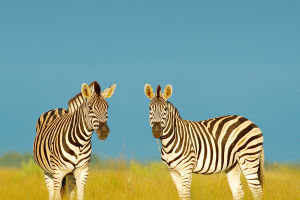Judging from the long evolutionary history of organisms on earth, the appearance of birds is not long. From the appearance of the earliest birds in the Cretaceous period to the evolution and development to today, it has only been more than 100 million years.
In this relatively short period of time, birds have adapted to various environments, developed a variety of physical and behavioral characteristics, and evolved into countless species with diverse forms and functions.
Birds, however, are among the most successful species on Earth. There are many species of them, and at the same time, there are many birds with incredible "skills", and parrots are one of them. Parrots are distributed all over the world, in warm, subtropical, and tropical regions.
They belong to one of the largest families of Aves, including two families, 82 genera, and 358 species.
Parrots are mainly distributed in tropical forests. In the southern hemisphere, some species extend to temperate regions, and some species are distributed to remote islands.
The largest variety of parrots is found in Latin America and Oceania, and there are much fewer species in Africa and Asia, but there are some well-known species in Africa, such as gray parrots, and peony parrots.
The most famous Latin American parrots are the various large macaws. Parrots are more diverse in Oceania than in Latin America. They are mostly arboreal and have strong beaks, which they use for cracking nuts and seeds.
Most parrots mainly eat plant fruits, seeds, nuts, berries, buds, and twigs on trees or on the ground, and also eat a small number of insects. Lorikeets are known for their staple food of pollen, nectar, and soft juicy fruit.
The color of the parrot is mainly green, but there are many exceptions. Some American parrots are predominantly blue and yellow. Many parrots have red on their wings, and the most colorful ones are the cockatoos.
They are predominantly red and green with blue, purple, brown, yellow, and black. Cockatoos are basically white and black, with occasional yellow and red.
A parrot's brain contains a very specific type of neuron. This kind of neuron can help them imitate the sounds made by humans and learn to speak. The parrot's mouth is relatively large, and the tongue is more fleshy and round. Such a mouth is very beneficial for them to imitate sounds.
Most birds have a syrinx, but parrots have a more specialized syrinx. The muscles around their syrinx are very well developed. The shape of the syrinx changes with the contraction and relaxation of the muscles. This will also change the sound they make. Therefore, they can imitate human speech by contracting the muscles near the syrinx.
Parrots are smart, good at learning, and can perform many novel and interesting programs after training. They are rare bird "performing artists" in various circuses, parks, and zoos, and are deeply loved by the public.
They can learn various skills, such as holding a small flag, receiving food, riding a bicycle, pulling a cart, somersaulting, and more. Parrots are closely related to the development of human civilization, and they are also people's best partners and friends.
Parrots are fascinating birds that are widely distributed across the world. They have unique physical and behavioral characteristics that have helped them adapt to various environments.
Their specialized syrinx and well-developed brain make them excellent mimics of human speech. They are also intelligent and can perform various entertaining tricks after training.


